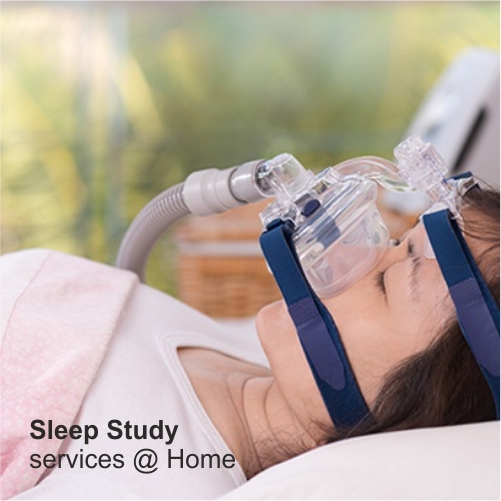How Sleep Study Bangalore enhances deep Sleep for Everyone
Just How a Rest Research Study Can Change Your Sleep Patterns: Insights and Solutions Available
A rest study functions as an essential device for people seeking to understand and improve their sleep patterns. It uses a comprehensive evaluation of rest behaviors and prospective conditions. By examining numerous metrics, health care specialists can identify underlying issues that interrupt corrective rest. This procedure not only aids in diagnosis yet also establishes the stage for customized therapy strategies. What insights might a sleep research disclose regarding your own rest behaviors?
Comprehending Rest Researches: What to Anticipate
When individuals prepare for a sleep research, they typically question what the experience will involve. These researches, usually carried out in a sleep center, goal to keep track of various physiological specifications throughout rest. Upon arrival, participants are greeted by experienced service technicians who guide them via the procedure. The setting is made to be comfy, enabling a natural rest experience. Individuals might be asked to load out surveys regarding their sleep habits and medical history, which assists in the evaluation.
As the evening advances, sensors are affixed to the body to track mind waves, heart rate, and breathing patterns. While the arrangement may feel uncommon, the objective is to gather exact data on the person's sleep patterns. The whole treatment is non-invasive and poses no threat to the participant. Eventually, the data gathered during the sleep research study is important for detecting prospective rest problems and establishing effective therapy strategies.
Common Rest Disorders Identified Via Rest Studies
Sleep research studies play a crucial duty in determining numerous rest conditions that can significantly influence an individual's health and health. Usual problems spotted via these research studies include obstructive sleep apnea, characterized by duplicated interruptions in breathing during rest, causing fragmented rest patterns. An additional common problem is sleeplessness, which entails problem dropping or staying asleep, often leading to daytime fatigue and impaired performance. Agitated legs disorder (RLS) is likewise regularly observed, triggering uncomfortable feelings in the legs and an irrepressible urge to move them at evening. Narcolepsy, a neurological condition that affects sleep-wake cycles, is another significant problem determined in rest research studies, resulting in excessive daytime sleepiness and unexpected rest strikes. Ultimately, parasomnias, which encompass irregular behaviors during sleep, such as sleepwalking or night horrors, are likewise noted. Early recognition of these problems can help with timely intervention and enhance general sleep quality.
The Refine of a Rest Research Study: From Preparation to Outcomes
The process of a rest study may seem intimidating, it is a organized and methodical strategy developed to collect crucial details concerning a person's rest patterns. At first, a health care company carries out a detailed examination, going over rest background and symptoms with the patient. This analysis assists establish the certain emphasis of the study.
Preparation usually involves standards on rest hygiene and drug adjustments prior to the research study. People might be instructed to stay clear of high levels of caffeine and alcohol to assure precise results. On the evening of the study, electrodes and sensing units are put to keep track of mind task, heart price, breathing, and movements throughout rest.
The information gathered is diligently examined by rest professionals, that recognize any kind of irregularities or patterns a sign of sleep disorders. Following this evaluation, a follow-up consultation is prepared to discuss the findings and prospective therapy options customized to the person's needs, promoting better rest high quality.
,aspect=fit)
Kinds of Sleep Researches: In-Lab vs. Home Rest Examinations
Two main types of rest research studies exist: in-lab studies and home rest tests, each catering to different needs and situations. In-lab studies generally happen in a sleep facility where patients are kept track of over night by health care experts. This method allows for thorough data collection on various sleep criteria, such as brain activity, oxygen levels, and heart rate. Clients are frequently connected to several sensing units, giving comprehensive understandings into their sleep conditions, including rest apnea and narcolepsy.
Alternatively, home sleep tests offer an easier option for people that choose to conduct analyses in their very own setting. These mobile devices monitor important metrics like airflow, oxygen saturation, and snoring. While home tests are much less complete than in-lab research studies, they act as a useful option for diagnosing common sleep conditions. Ultimately, the selection in between these two kinds of rest researches depends upon individual choices, medical requirements, and the seriousness of sleep-related concerns.
Analyzing Your Sleep Research Study Outcomes: Trick Metrics Discussed
Understanding the outcomes of a rest research study is crucial for individuals seeking insights right into their rest wellness. Trick metrics normally analyzed in sleep researches consist of the Apnea-Hypopnea Index (AHI), which determines the number of apneas and hypopneas per hour of rest. AHI worths assist determine the intensity of sleep apnea, with greater scores suggesting a lot more substantial issues. Another important metric is the complete bedtime (TST), which mirrors the overall duration of rest throughout the research study. Rest effectiveness, the proportion of time invested asleep to time invested in bed, is additionally essential; higher percents indicate much better rest high quality. Furthermore, the portion of sleep spent in different stages-- light, deep, and REM-- offers insights right into sleep design. Comprehending these metrics gears up patients with the knowledge required to review their sleep patterns with medical care carriers, leading the means for informed decisions regarding their Visit This Link sleep wellness.
Treatment Choices and Recommendations Based Upon Your Rest Research study
When a rest study exposes problems such as sleep apnea or other rest disorders, different treatment alternatives and referrals end up being offered go right here to enhance overall rest wellness. For obstructive rest apnea, continuous positive respiratory tract stress (CPAP) treatment is commonly recommended, providing a constant stream of air to keep respiratory tracts open during rest. Conversely, oral devices may be recommended for light to moderate instances, repositioning the jaw to avoid air passage obstruction.
In situations of sleeplessness, cognitive behavioral therapy for sleeping disorders (CBT-I) is often recommended, concentrating on behavior changes and thought patterns that disrupt sleep. Furthermore, lifestyle alterations such as fat burning, routine workout, and preventing alcohol or caffeine prior to going to bed may improve rest high quality.

Building Healthy And Balanced Sleep Habits: Tips for Better Relax
Structure healthy rest routines is vital for attaining restorative remainder. Establishing a consistent sleep routine, limiting screen time before bed, and producing a comfortable rest environment can considerably enhance sleep top quality. These approaches act as foundational actions for people looking for better sleep end results.
Develop a Sleep Routine
Developing a consistent rest regimen is essential for advertising healthy rest habits and improving total health. Sleep Study Bangalore. A routine rest timetable, where individuals go to bed and get up at the same time every day, enhances the body's all-natural circadian rhythms. This predictability assists control the sleep-wake cycle, resulting in enhanced sleep quality. Producing a relaxing pre-sleep routine, such as analysis or practicing leisure techniques, can indicate the body that it is time to unwind. Furthermore, enhancing the sleep environment-- by keeping a comfortable temperature level, minimizing noise, and ensuring darkness-- can further support relaxing rest. By focusing on these methods, individuals can grow a sustainable sleep regimen that cultivates restorative sleep and adds to better physical and psychological wellness
Restriction Display Time
As people significantly depend on screens for enjoyment and interaction, limiting display time prior to bed has actually become vital for promoting much better sleep. Study indicates that direct exposure to blue light released by devices such as smartphones, computers, and tablet computers can disrupt the manufacturing of melatonin, the hormone liable for managing rest. As a result, experts recommend turning off screens at least one hour prior to going to bed to enhance sleep top quality. Taking part in alternate activities, such as exercising or reading a book relaxation methods, can help people take a break and prepare for sleep. By purposely lowering display time, individuals can grow healthier sleep patterns, causing improved general wellness and enhanced daytime alertness. Prioritizing this aspect of rest hygiene is More Info crucial for lasting health.
Produce a Sleep Sanctuary
Creating a rest sanctuary can greatly improve a person's capacity to accomplish restful rest. This setting needs to prioritize comfort and peace, integrating aspects that promote leisure. An appropriate cushion and pillows are crucial, as they directly influence rest high quality. Additionally, the area needs to be dark, quiet, and cool; making use of power outage drapes and white sound devices can facilitate this atmosphere. Personalizing the space with soothing shades and fragrances, such as lavender, can even more improve leisure. Decreasing mess additionally contributes to a tranquil setting, enabling mental quality - Sleep Study Bangalore. By thoughtfully making a sleep refuge, people can cultivate healthier rest routines and develop a constant regimen, eventually bring about enhanced overall well-being and restorative remainder
Regularly Asked Questions
Just how Lengthy Does It Require To See Improvements After a Sleep Study?
Improvements after a rest study can differ, yet several individuals begin to notice favorable modifications within a few weeks. Consistent follow-up and adherence to recommended therapies play important duties in achieving perfect outcomes.

Can Children Undergo Sleep Researches, and Just How Are They Different?
Yes, kids can go through rest studies, which differ from adult research studies in checking methods and equipment. Pediatric examinations typically include child-friendly atmospheres and might include parent participation to guarantee convenience and exact results.
Are Rest Research Studies Covered by Insurance Policy, and What Are the Costs?
Sleep researches can be covered by insurance policy, depending on the policy and medical necessity. Expenses differ extensively, varying from $300 to $3,000, influenced by the sort of research study and place of the facility.
What Way Of Life Modifications Can Improve the Effectiveness of Rest Research Study Results?

Implementing consistent sleep timetables, reducing high levels of caffeine consumption, producing a calming going to bed regimen, and keeping a comfy sleep atmosphere can significantly boost the effectiveness of sleep research study results, advertising much better sleep top quality and overall health.
Exactly how Frequently Should I Repeat a Sleep Research Study for Ongoing Issues?
People experiencing recurring sleep issues ought to take into consideration duplicating a sleep study each to two years, or as recommended by health care specialists, to keep an eye on adjustments and change treatment plans effectively based upon their evolving sleep patterns. (Sleep Study Bangalore)
Rest research studies play an essential function in determining different sleep disorders that can greatly affect an individual's health and wellness and wellness. Typical problems spotted via these researches include obstructive sleep apnea, defined by duplicated interruptions in breathing throughout rest, leading to fragmented rest patterns. When a sleep study discloses concerns such as rest apnea or various other rest conditions, various therapy choices and referrals become available to enhance general rest health and wellness. Developing a constant rest regimen, limiting screen time prior to bed, and creating a comfy rest atmosphere can considerably boost rest quality. Additionally, optimizing the sleep atmosphere-- by keeping a comfy temperature, reducing sound, and making certain darkness-- can even more support relaxing rest.